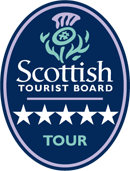7 sites in D&G connected with Robert the Bruce- How many have you visited?
Although not born in Dumfries and Galloway Scotland’s greatest King has great connections with our Region and his actions here went on to shape the history of our country. As historians from the Region we feel it is so important to give a flavour of the remarkable story of Robert Bruce’s impact on Dumfries and Galloway. There are many sites across our Region that are connected with the Bruce family and in this blog we want to highlight just seven of the sites that are well worth a visit if you are interested in the history of Scotland and of the role Dumfries and Galloway played in the Scottish Wars of Independence. In our first year of trading we have taken various local school groups and locals around these sites to learn more about Robert the Bruce. We have also had a number of overseas guests who have traced their family history back to the Bruce line and we have guided them around many of these historic sites too.
Although the list could have been a lot longer here are seven sites in Dumfries and Galloway that we feel everyone should try and visit!
1. Lochmaben Castle
Robert the Bruce had moved from Annan to Lochmaben where he built a motte and bailey castle. The motte of this castle still exists as part of the Lochmaben Golf course however Lochmaben Castle built by King Edward of England sits at Castle Loch and is well worth a visit. Lochmaben Castle was originally built by King Edward I of England around 1300 and Robert the Bruce took this castle after pronouncing himself as King of Scotland in 1306. The castle was constantly fought over during the Scottish Wars of Independence and it sits in ruins today. The castle can be visited today although parts of it are surrounded by fencing as some of it is considered unsafe. However it is still a great example of a 14th Century Scottish Tower House which Bruce our Beltie mascot enjoys visiting!
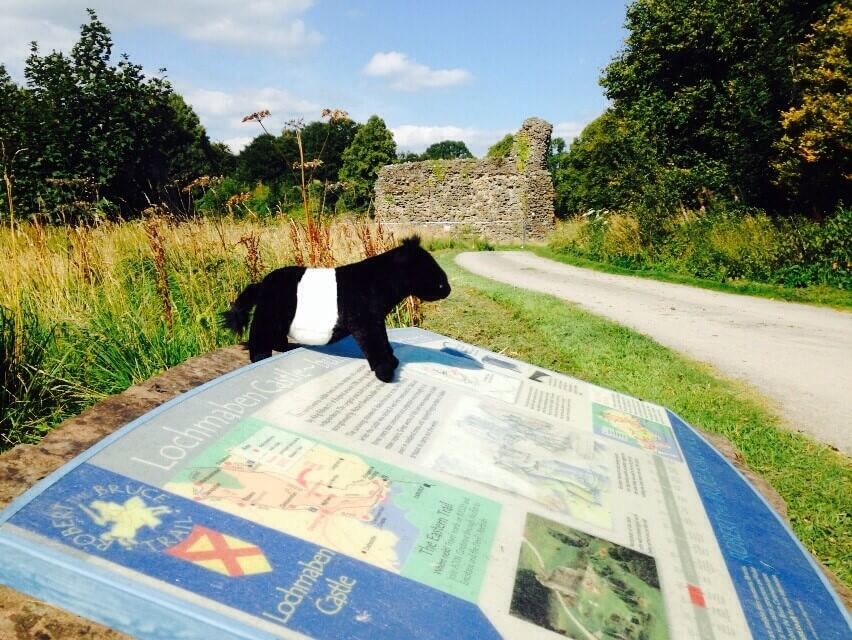
2. Comyn’s Tower, Dalswinton Estate
It was from the castle within the Dalswinton Estate on the 10th February 1306 that John Comyn, Lord of Badenoch, set off for his meeting with Robert Bruce at Greyfriars Church in Dumfries. The two men had been joint guardians of Scotland since William Wallace’s resignation and they were at that point the only two real contenders for the Scottish throne. The two men had always had a turbulent relationship and only hours after Comyn left this site he lay dead at the high altar of Greyfriars Church. Comyn’s Tower that sits within Dalswinton Estate can be visited by the public and was part of a 15th century lairds tower house. The Dalswinton House now stands where the original Comyn’s Castle was however this is a private house that is not open to the public.
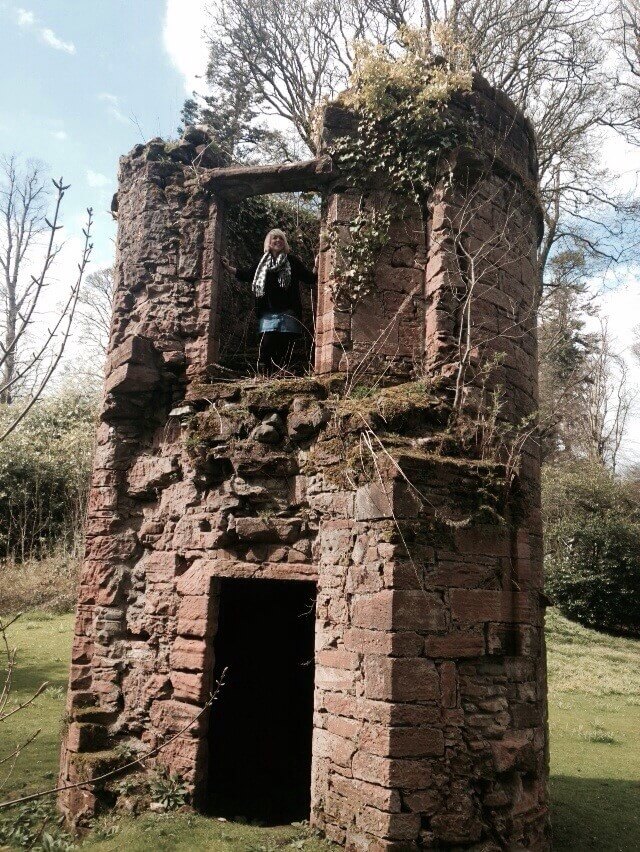
3.Greyfriars Church, Dumfries
The plaque shown in the picture marks the spot where John Comyn was murdered by Robert the Bruce aided by Roger Kirkpatrick within the Greyfriars Monastery. On the 10th February 1306 the two main contenders for the Scottish throne met here. There are no eye witnesses reports to tell us exactly what happened on this day however one fact that we are certain of is that John Comyn was left dead at the altar. The Greyfriars Church that exists today dates from 1868 and prior to this had been part of the site of Maxwell’s Castle which is why that street is now called Castle Street. Greyfriars Monastery at that time was a much larger site and covered some of the area that now includes the Friars Vennel, Buccleuch Street and Church Crescent with its orchards stretching down to the River Nith.
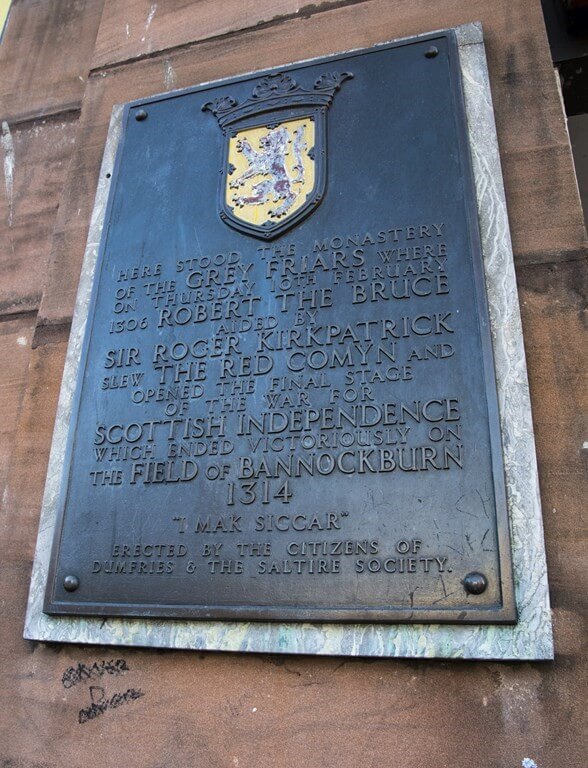
4. St Mary’s Church, Dumfries
In 1307 Robert the Bruce’s brother in law, Sir Christopher Seton was hanged by the English at the present site of St Mary’s Church in Dumfries. Bruce’s sister, Christiana, later had a small chapel erected in her husbands memory . It soon became known as St Christopher’s Chapel, and eventually was renamed The Chrystal Chapel. All that remains is the small stone pillar which has the following inscription on it:
These stones, relics of the ancient chapel dedicated to he Holy Rood, endowed by King Robert the Bruce, in memory of sir Christopher or Chystal Setoun, are here placed by Major James Adair, 1840.
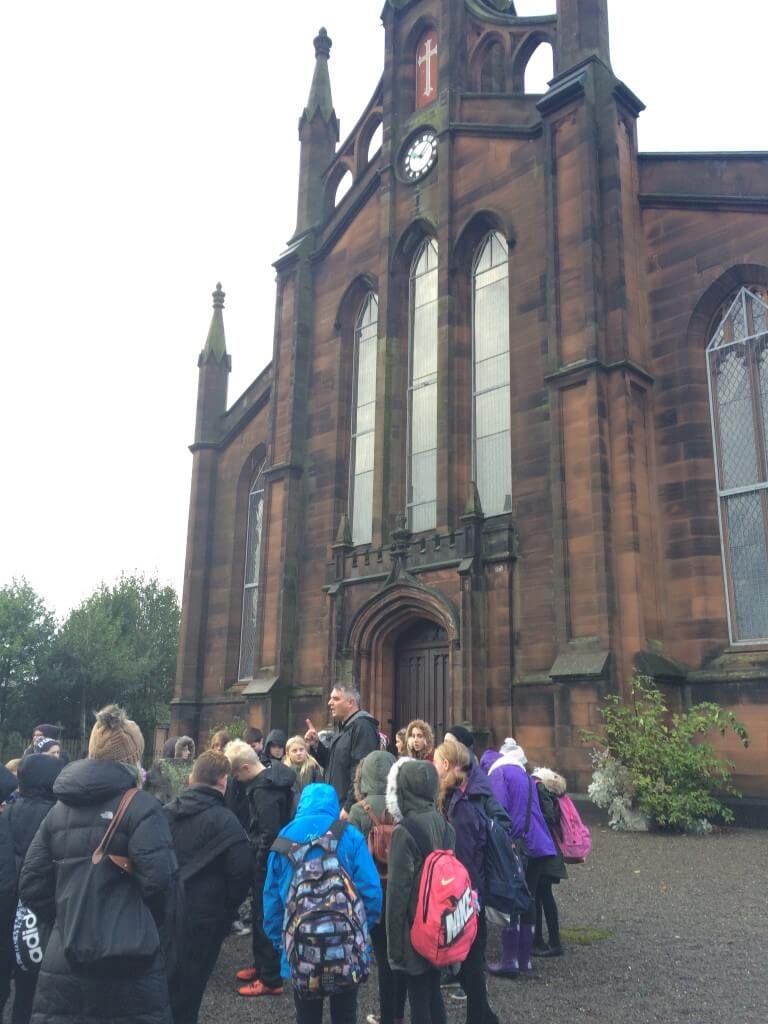
5. Castledykes Park
Castledykes Park in Dumfries is a place of great historic importance. After the murder of John Comyn on 10th February 1306 Robert the Bruce had some quick decisions to make. Castledkyes Park was once the site of Dumfries Castle which in 1306 at the height of the Scottish Wars of Independence was occupied by English Troops. With the murder of his rival for the throne Robert the Bruce proceeded from Greyfriars Monastery to Dumfries Castle and overthrew the English garrison within a couple of hours and from that point on the history of Scotland changed forever. It was also at this site that Robert the Bruce raised Scotland’s Royal Standard and this spot can still be visited today. The only section of castle that remains in the park today is one small pillar which has a picture depicting what the castle would have looked like in 1306.
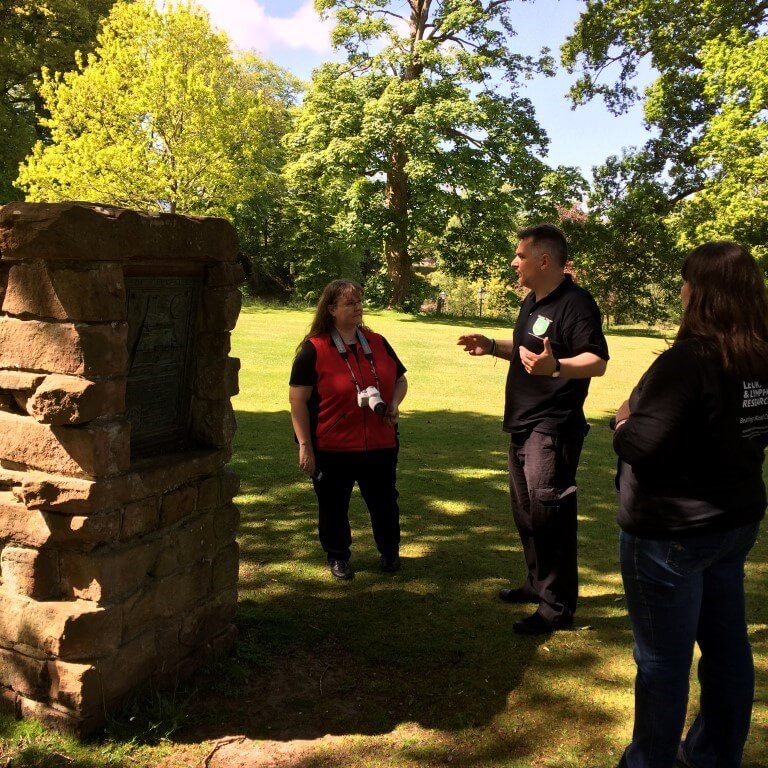
6. Bruce’s Stone Glentrool
One of our favourite places to take guests in the Region is to Bruce’s Stone at Glentrool. Not only does this site have great historic importance but the drive through the Galloway Forest Park, the views over Loch Trool and the surrounding hills including the Merrick are simply stunning. The memorial of Bruce’s Stone that can be seen here is to commemorate the Battle at Glentrool that took place in 1307. This was one of Robert the Bruce’s first great victories against the English after pronouncing himself as King of Scotland and after a period of time in exile. At this point with approximately 300 men lightly armoured men Robert the Bruce managed to defeat the Earl of Pembroke and his 1,500 heavy English cavalry by luring them up the narrow track that runs alongside Loch Trool and the Scots bombarded them with rocks. A humiliating defeat for the English but a victory for Robert the Bruce that would go on to show the Scots that he was now ready to take on Scotland’s fight for independence and from this point his reputation and unifying spirit began to grow.
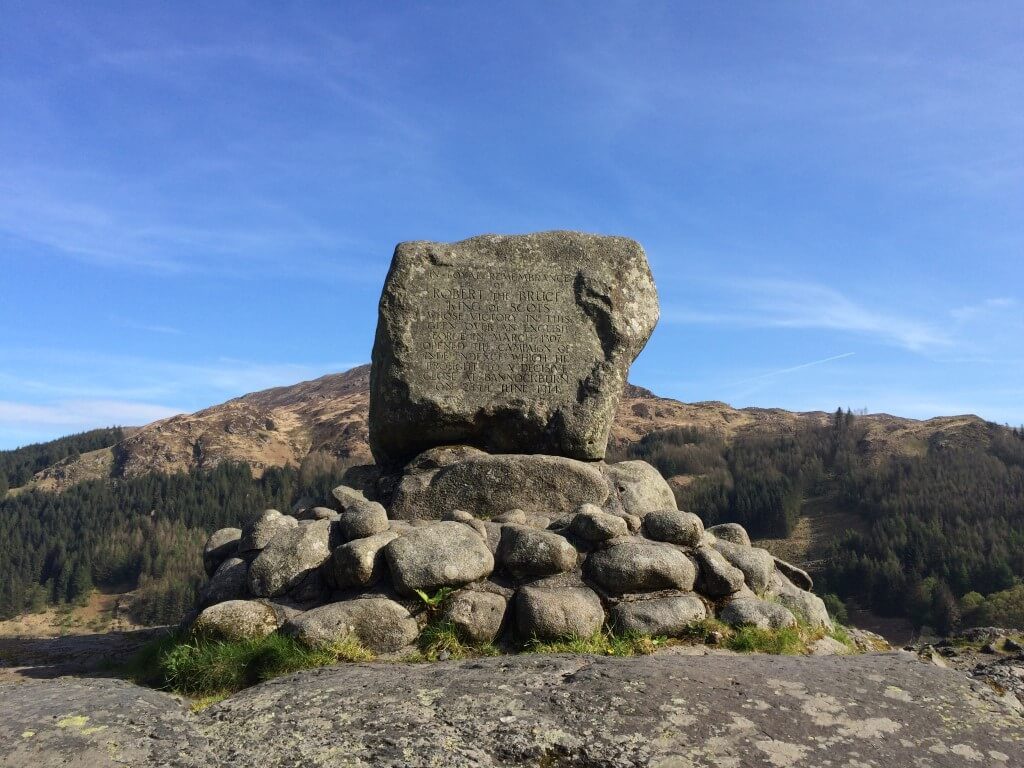
7. Dumfries Museum
Dumfries Museum is where you will find a cast of Robert the Bruce’s skull and an original key that was found in the foundations of Castledykes at the site of the castle where Robert the Bruce raised the Scottish Standard. Dumfries Museum is a fantastic place which also contains many artefacts that came from the time that Robert the Bruce was living in our Region. It is well worth a visit with friendly and helpful staff and gallery trails that can inspire people of all ages to explore all that the museum holds.
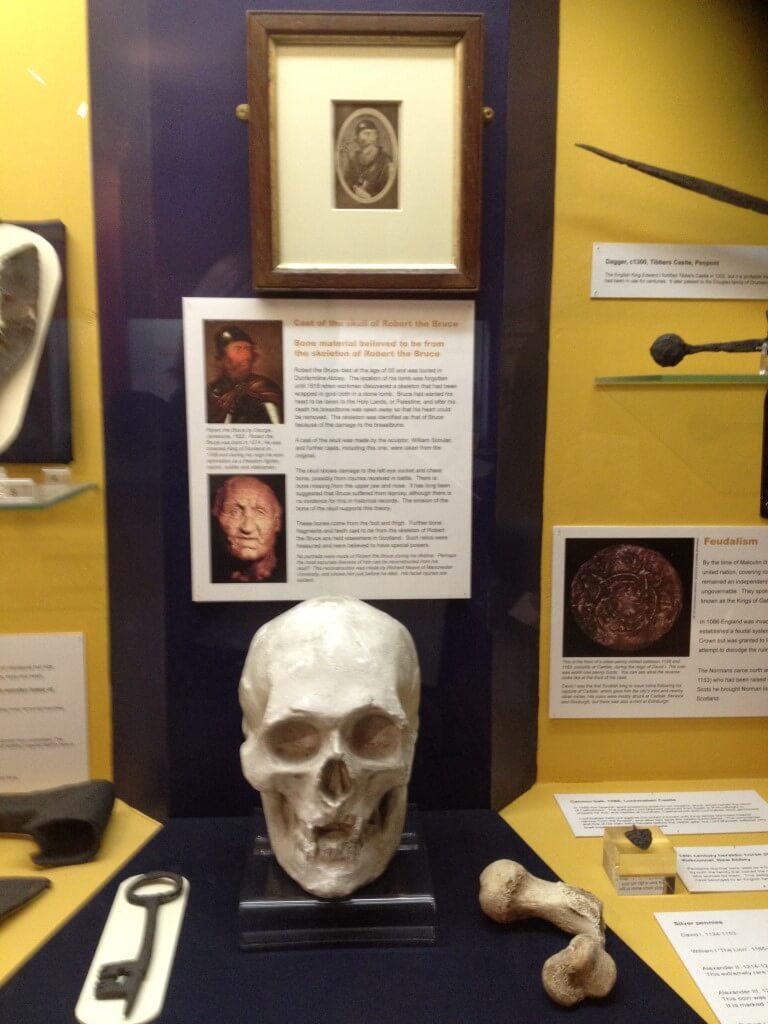
Read more here about our Robert the Bruce Tour and our Robert the Bruce Ancestral Tour!

